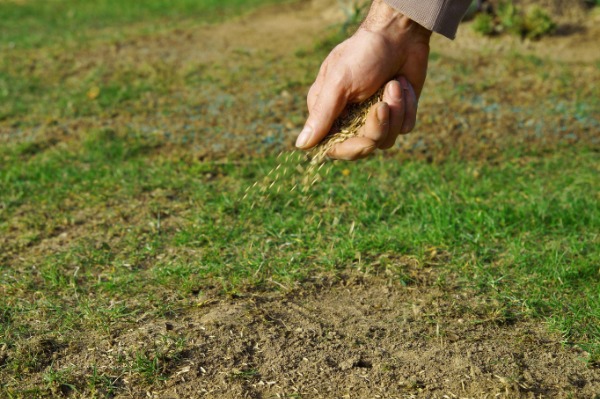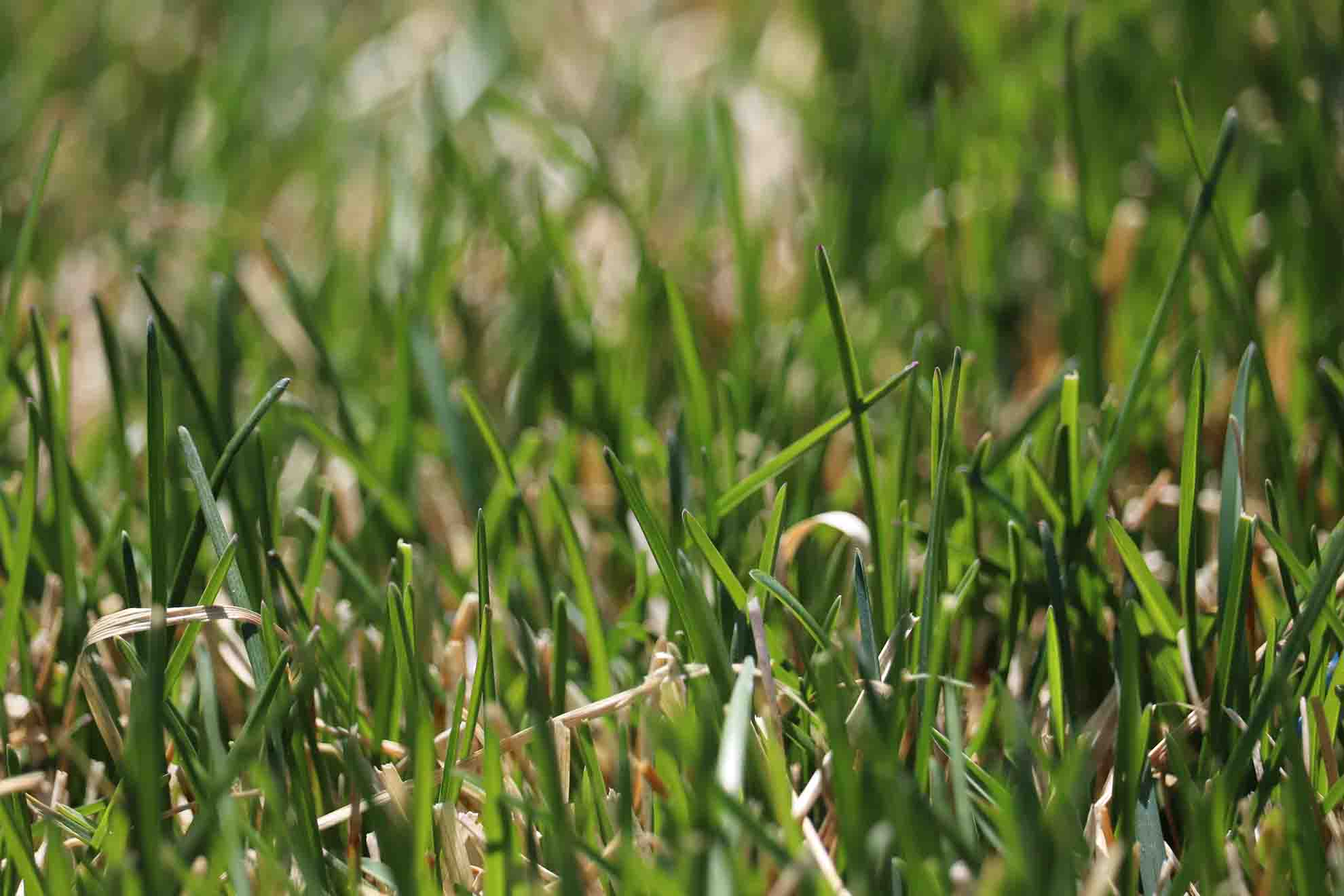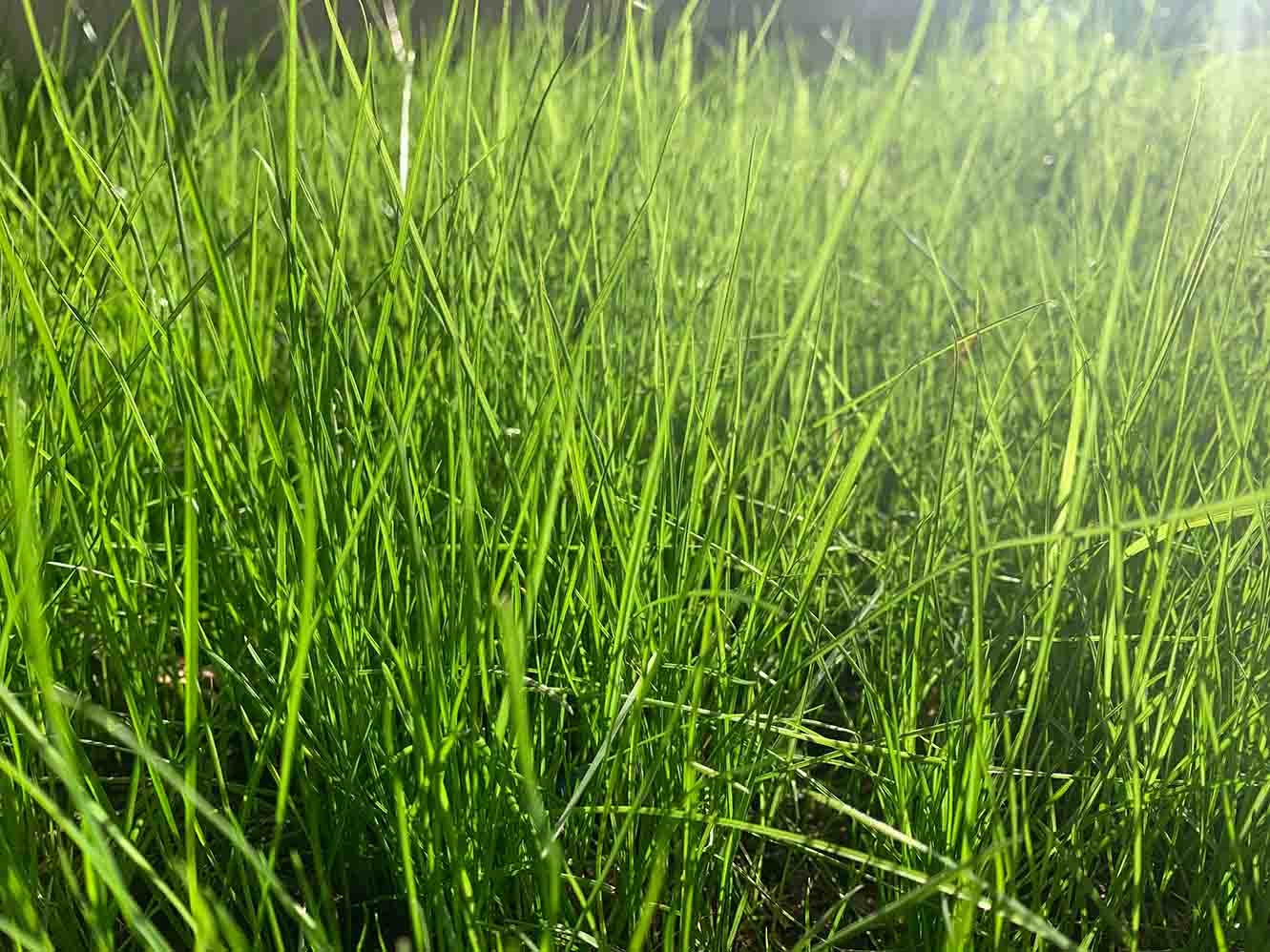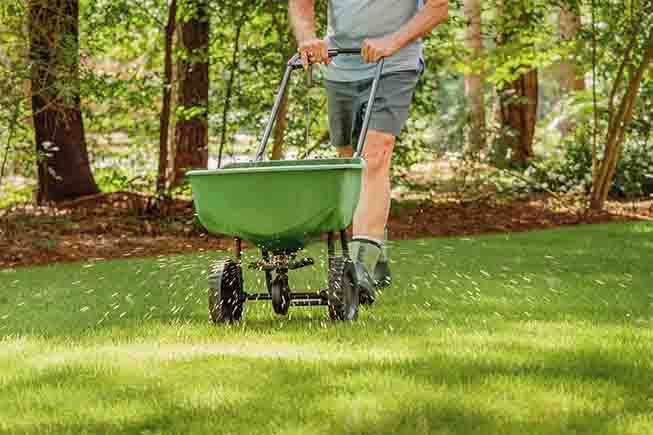Choosing The Right Grass For Your Omaha Lawn
As lawns in Omaha experience stress from heat, drought, or foot traffic, it’s common to see thinning patches, bare spots, and overall decline. That’s where overseeding comes in. Overseeding is a practical and affordable way to refresh your lawn without tearing everything up and starting over.
Keep reading to learn which grass types you should be using for overseeding to create the thickest, healthiest lawn in Omaha, NE!
What Is Overseeding?

Overseeding is the process of spreading new grass seed over an existing lawn to fill in thin spots, improve density, and enhance lawn color and health. It’s especially useful in climates like Omaha’s, where the changing seasons can take a toll on even the best-maintained turf.
Most Omaha lawns are composed of cool-season grasses, which grow actively in spring and fall but may go dormant or thin out during the hot summer. Overseeding in late summer or early fall, typically from late August to mid-September, is the ideal time for homeowners in Nebraska. This timing allows new grass to germinate in warm soil with cooler air temperatures, giving it a strong start before winter.
In Omaha, not every grass species performs equally well year-round. Below are the top grass seed varieties that thrive when overseeded into existing lawns in eastern Nebraska.
Kentucky Bluegrass

Kentucky bluegrass is a popular and time-tested turfgrass in Omaha and throughout the Midwest. It forms a dense, carpet-like lawn with a rich green color and excellent recovery from wear.
One downside is that Kentucky bluegrass is slower to germinate, often taking 14 to 21 days, so overseeding with it requires patience and consistent watering. It also tends to go dormant during summer droughts unless well-irrigated. Many homeowners in Omaha blend it with faster-germinating species like perennial ryegrass to get quicker results.
Why use Kentucky bluegrass for overseeding in Omaha?
- Self-repairing ability: Kentucky bluegrass spreads via underground rhizomes, allowing it to fill in bare patches and recover from damage naturally.
- Cold weather resilience: It’s extremely winter-hardy, making it ideal for Nebraska’s frigid winters.
- Attractive appearance: This grass type is known for its lush texture and rich green hue, creating a visually striking lawn.
Perennial Ryegrass

Perennial ryegrass is one of the fastest-germinating cool-season grasses, making it an excellent companion seed for overseeding. In Omaha, it’s often mixed with Kentucky bluegrass or tall fescue to provide quick green coverage while slower-growing grasses take hold.
However, perennial ryegrass doesn’t handle Nebraska’s summer heat and drought as well as other grasses, and it doesn’t spread like bluegrass. For this reason, it’s usually included as a temporary fix or a short-term filler in seed blends, not as a standalone lawn.
Benefits of perennial ryegrass for overseeding:
- Rapid germination: Sprouts within 5 to 10 days, offering visible improvement within weeks.
- Great for patch repair: Its quick establishment makes it ideal for overseeding worn areas or bare spots in high-traffic zones.
- Cool-season performance: It remains active in fall and spring, delivering strong color and density in milder months.
Turf-Type Tall Fescue

Turf-type tall fescue is gaining popularity in Omaha because of its drought tolerance, deep root system, and adaptability. While coarser than Kentucky bluegrass, newer turf-type varieties have finer blades and improved aesthetics that blend well in residential lawns.
For Omaha homeowners looking to reduce water use while still having a resilient lawn, overseeding with turf-type tall fescue in late summer is a great option. It’s especially useful for patching areas that suffer from summer stress.
Why overseed with tall fescue in Omaha?
- Heat and drought tolerance: Tall fescue’s deep roots allow it to thrive in summer heat with less irrigation.
- Quick establishment: Germinates within 7 to 12 days and establishes more quickly than bluegrass.
- Shade performance: It performs well in sun and partial shade, making it a good option for diverse landscapes.
- Low maintenance: Requires less fertilizer and watering than Kentucky bluegrass.
Fine Fescues

Fine fescues, a group that includes creeping red fescue, hard fescue, chewings fescue, and sheep fescue, are ideal for shaded or low-maintenance areas. These grasses thrive in environments where most others struggle, making them essential for specific lawn conditions.
Fine fescues are often used in seed blends with Kentucky bluegrass or tall fescue to improve shade performance. When overseeding in shaded zones or less-used parts of the lawn, fine fescues are a go-to solution.
Benefits of fine fescues for overseeding in Omaha:
- Superior shade tolerance: Fine fescues grow well in tree-shaded areas or on the north side of homes where sun exposure is limited.
- Low water and nutrient needs: They can maintain decent color and density with minimal input.
- Soft texture and fine blades: These grasses have a delicate, lush appearance that many homeowners appreciate.
Blended Seed Mixtures

Because Omaha’s climate features extremes, no single grass species excels in every condition. That’s why many local lawn care professionals and homeowners use blended seed mixtures for overseeding.
The following blends provide a balance of rapid germination, long-term durability, shade adaptability, and drought resistance. The ryegrass establishes quickly, the bluegrass thickens over time, and the tall fescue or fine fescue contributes resilience or shade tolerance.
A typical blend might include:
- 70% Kentucky bluegrass
- 20% perennial ryegrass
- 10% fine fescue
Or for more drought-prone properties:
- 80% turf-type tall fescue
- 10% Kentucky bluegrass
- 10% perennial ryegrass
Overseeding For A Thicker, Healthier Lawn In Omaha
Overseeding is an essential part of cool-season lawn maintenance in Nebraska, especially in Omaha where summer stress and winter freeze cycles can both lead to thinning turf. The key is choosing the right seed type, or seed blend, that matches your lawn’s needs.
Aerate your lawn first to improve seed-to-soil contact, water consistently during germination, and hold off on mowing until new seedlings are well established. Call Summit Lawns in Omaha today for the best results possible for your overseeding efforts!

